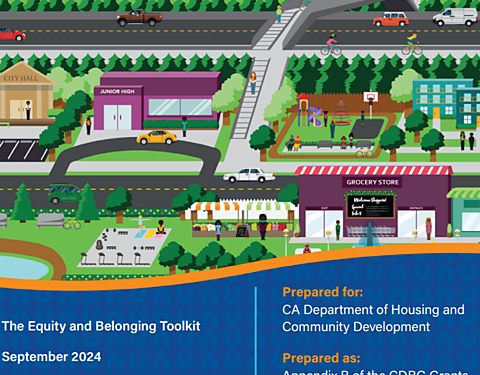The Trump administration has proposed cutting federal aid to the states for “community development.” The Department of Housing and Urban Development (HUD) hands out roughly $20 billion a year of community development (CD) aid for a vast array of local activities, including low-income housing, local infrastructure, welfare, homeless aid, business subsidies, and grants to nonprofit groups.
Trump’s proposed cuts make sense because there is nothing in HUD’s CD spending that state and local governments could not fund by themselves. Indeed, such spending—if needed—would be more efficient if funded locally without all the bureaucracy imposed by Washington. HUD CD aid is distributed through numerous programs, including HOME and Community Development Block Grants (CDBGs).
The vast CD bureaucracy is evident in examining the paperwork that the spending generates—plans, reports, applications, guidebooks, regulations, etc. CD spending involves complex rules to allocate the federal money and to specify how it is used.
I list a sampling of CD paperwork below, with a focus on California. For each item, consider the costs of all the well-paid government administrators struggling with all the rules and procedures. And consider how none of it would be needed if the money for CD activities were raised and spent directly by local governments.
Lastly, consider that $20 billion in CD spending equals just 0.8 percent of state and local tax revenues. If the spending were needed, the states could easily fund it themselves without all the federal bureaucracy.
Statute and regulations. The basic federal CD statute is 104 pages. Regulations are 150 pages for the CDBG program and 102 pages for the HOME program.
Strategic Plans. The 50 states and 1,250 cities and counties that receive CD funds directly from HUD (called “entitlement communities”) must create a Strategic Plan every five years. California’s plan is 467 pages. Los Angeles’s plan is 205 pages.
Annual Action Plans. Every year, the states and 1,250 entitlement communities submit CD Action Plans to HUD. California’s Action Plan is 242 pages, and its Action Plan for the separate disaster recovery part of CD aid is 162 pages.
Annual Performance Report. Every year, the states and 1,250 entitlement communities describe their progress to HUD in Performance Reports. California’s report is 95 pages.
Grants Management. California’s CD Grants Management Manual is massive. Click “Grants Management Manual” and see links to the sections. Cato’s Krit Chanwong counted an enormous 882 pages in total for just the PDF sections! A special CD disaster recovery version of the manual is an additional 143 pages.
DEI Bureaucracy. A colorful 159-page diversity, equity, and inclusion (DEI) document is Appendix B of the California CDBG Grants Management Manual. For some reason, this “Equity and Belonging Toolkit” is not linked on the main page of the manual. The Toolkit begins with a “land acknowledgement” and a map of 174 tribal groups in pre-contact California.
Pork Barrel. While most HUD CD aid is dished out by formulas, a 2024 bill distributed $3.3 billion of CD money for 2,407 projects by a congressional pork-barrel or earmark process. HUD’s resources for this “Economic Development Initiative” include this 77-page guide. The projects are listed here from pages 916 to 1,133. The first is $15 million for the University of Alaska Troth Yeddha’ Indigenous Studies Center, and the last is $1.8 million for a sewage project in Casper, Wyoming.
National Objectives. This 208-page guide is HUD’s “national objectives” for the 1,250 entitlement communities.
Universal Notice. This 180-page HUD notice appears to be the Trump administration’s effort to stamp its worldview on the disaster recovery part of the CDBG program.
State-to-Local Funding. HUD distributes CD money to the states and entitlement communities, and the states distribute the money to non-entitlement cities and counties. Here is a 325-page agreement between California and Merced County for such trickle-down aid.
Local Bureaucracies. Every city and county receiving HUD money trickling down from above needs a CD bureaucracy. Davis, California, has a 123-page five-year plan, a 9‑page Citizen Participation Plan, a 48-page Annual Action Plan, a 62-page Community Needs Survey, a 30-page guide for groups wanting funding, and a 20-page Program Service Guide. Davis is a city of 67,000 people.
Funding Availability. California issued a 40-page guide for potential recipients of $34 million in federal CD money for small cities.
Compliance. Local governments receiving CD money distribute it to businesses and nonprofit groups. Here is a 40-page Administrative Compliance Handbook for San Francisco grantees.
Administrative Systems. HUD has a 90-page Handbook for subrecipients of federal CD funding.
Marketing. HUD produces an array of educational and advertising media extolling the benefits of CD spending, such as the items here.
Litigation. Litigation surrounds HUD aid because recipients and community activists often feel aggrieved in one way or another. For example, activists are complaining that Cincinnati’s five-year strategic plan allocates CD and housing funds to the wrong neighborhoods.
Lobbying. The resources consumed by lobby groups are another bureaucratic cost of federal aid programs. CD lobbyists include general government groups and specialized CD advocacy groups.
Much More. This is only a fraction of the vast CD paperwork one can find on federal, state, and local websites. There are also many memos, training materials, data spreadsheets, and other sorts of bureaucracy.
After paying the administrator salaries to shuffle all this paper, is any CD money left over to fix the roads or provide shelter beds for the homeless?
After being launched in the 1960s, CD programs quickly became so complicated that Congress created the CDBG program in 1974 to consolidate the aid. But federal programs never stay simple, and CD paperwork is piling ever higher. Indeed, the broader federal aid-to-state system is an incredibly complicated mess, as I describe in studies here and here.
CD aid should be repealed. Falls Church, Virginia, should fund its own traffic lights; Fort Lauderdale should fund its own street improvements; Los Angeles should fund its own bike trails; and Martha’s Vineyard should fund its own youth centers.
Data note: HUD’s Community Planning and Development outlays have fluctuated between about $15 billion and $25 billion in recent years, so I said roughly $20 billion.
















